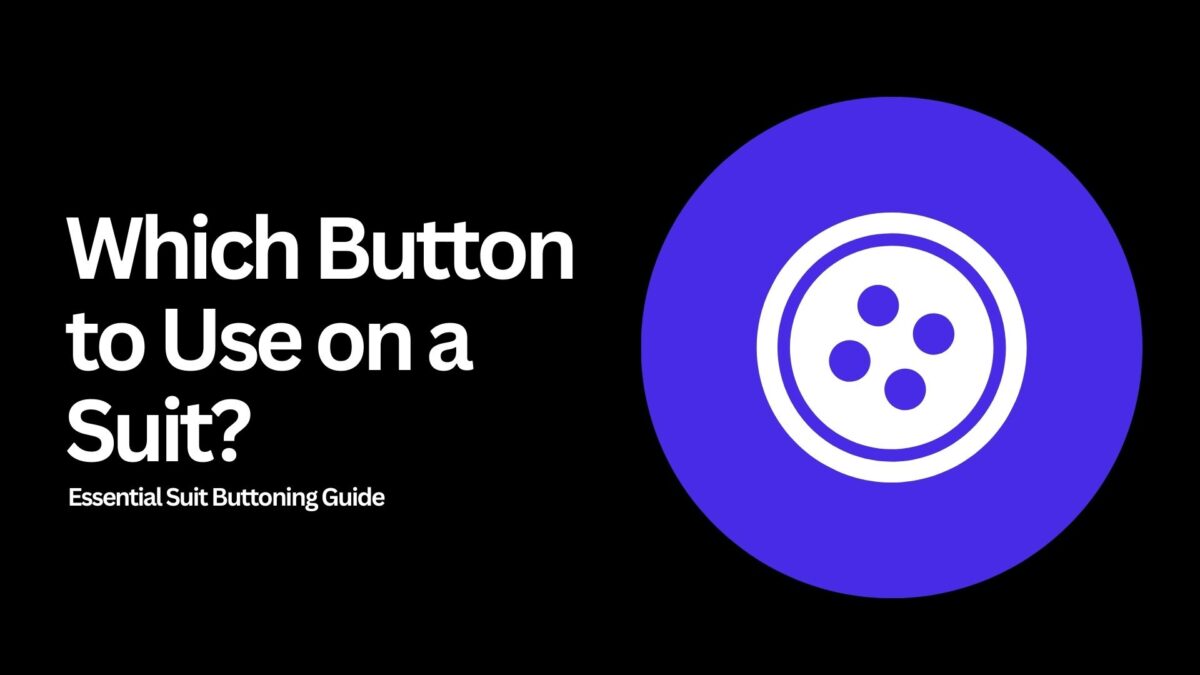
Which Button to Use on a Suit? | Essential Suit Buttoning Guide
Which Button to Use on a Suit? | Essential Suit Buttoning Guide When it comes to choosing the right button for your coat, the details
Interlinings
In Mumbai, Double Ghoda is a leading supplier and stockist of interlining fabric, offering a comprehensive range for garment manufacturers and wholesalers. Our collection includes fusible interlining, non-woven interlining, and woven interlining fabric, among others. As a trusted wholesaler,we provide high-quality interlining solutions, including non-fusible interlining, woven fusible interlining, and non-woven fusible interlining. Double Ghoda’s expertise extends to collar interlining, lining and interlining fabric, and various interlining types, making them a go-to choice for garment manufacturers in India.
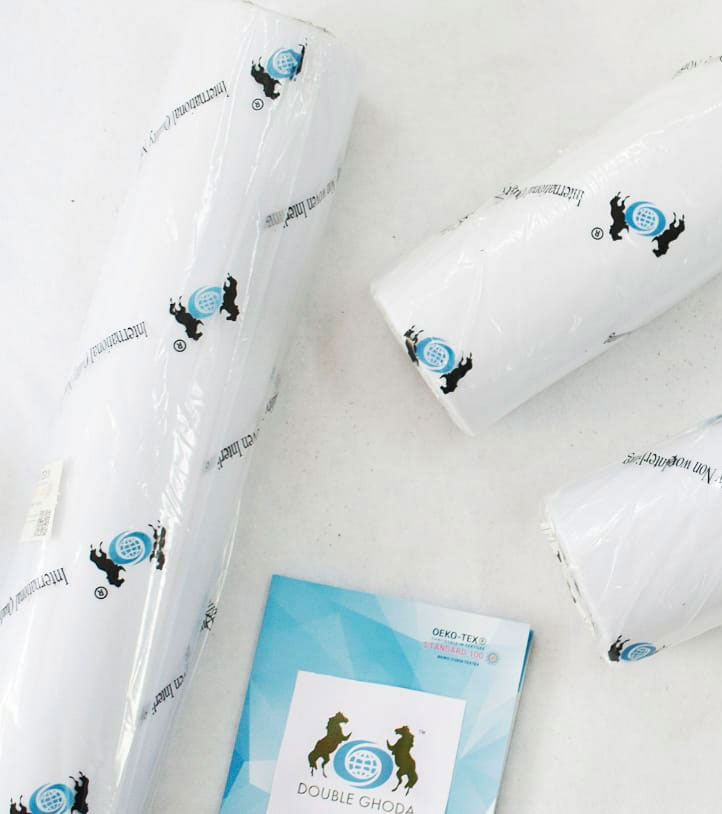
Facilitate easier sewing and enhance production efficiency.
Maintain the garment's shape and improve its overall appearance.
Create a functional, durable, and comfortable-to-wear product.
Reliable performance, every time.
Garments maintain their form over time.
From delicate to structured, find the perfect weight and type.
Beautiful garments with natural flow.
Here are some frequently asked questions (FAQ) for an Interlining page, along with answers:
Interlining is a layer of material added between the outer fabric (fashion fabric) and the lining of a garment. It’s essentially a non-woven fabric that provides structure, body, and stability to your project.
Interlining offers several benefits:
There are many types of interlining, each with its own properties and uses. Some common types include:
The best interlining choice depends on several factors:
Fabric weight and drape:Lighter fabrics may need lightweight interlining to avoid stiffness.
Area of application: Collars and cuffs need stiffer interlining than bodices.
Desired effect:Do you want a crisp structure or a softer drape?
Attachment method: Consider ironing vs. sewing.
Interlining is commonly used in:
There are two main methods:
Fusible interlining:Use an iron on a heat setting appropriate for the fabric and interlining. Follow the manufacturer’s instructions.
Sew-in interlining: Pin the interlining to the wrong side of your fabric and sew it in place using a straight stitch or zig-zag stitch.
Follow the care instructions on the garment label. Generally, interlined garments can be washed and ironed, but be mindful of the heat settings.
Yes, there are lightweight interlinings specifically designed for use with delicate fabrics. Look for interlinings made from woven silk or lightweight non-wovens.
Purchase slightly more interlining than the size of your fabric pieces. This allows for trimming and maneuvering during application.
This can happen due to uneven heat distribution when ironing fusible interlining. Ensure your iron covers the entire area and apply constant pressure.
Double-check the ironing temperature settings for both fabric and interlining. You might need to adjust the heat or use a pressing cloth. In some cases, sewing along the edges of the interlining can provide extra security.
Yes, there are various weights of interlining available. Choose a lighter weight interlining or a more breathable option for a softer drape.
Interfacing is similar to interlining but is typically used for smaller areas of a garment that need extra support, such as buttonholes, pockets, and collars. Interlining is used for larger areas to provide overall structure and body.
Interlining can be found at fabric stores, online retailers specializing in sewing supplies, and some craft stores.

Which Button to Use on a Suit? | Essential Suit Buttoning Guide When it comes to choosing the right button for your coat, the details
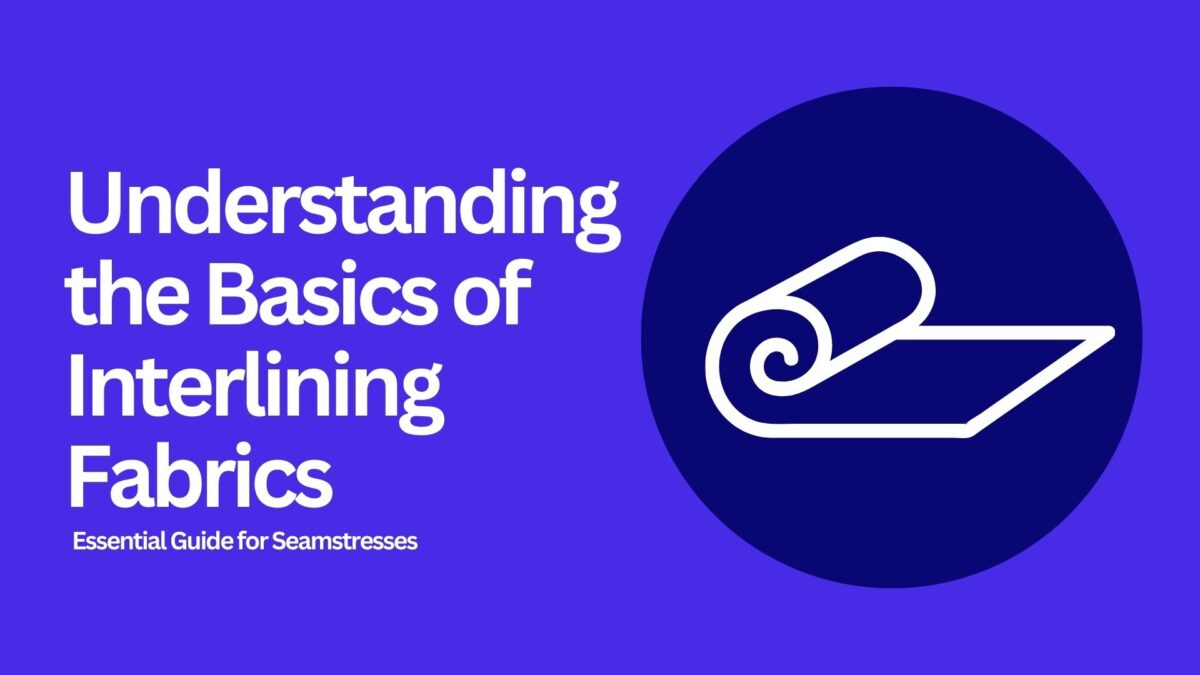
Understanding the Basics of Interlining Fabrics: Essential Guide for Seamstresses If you’re diving into the world of sewing, understanding interlining fabrics is crucial. One such
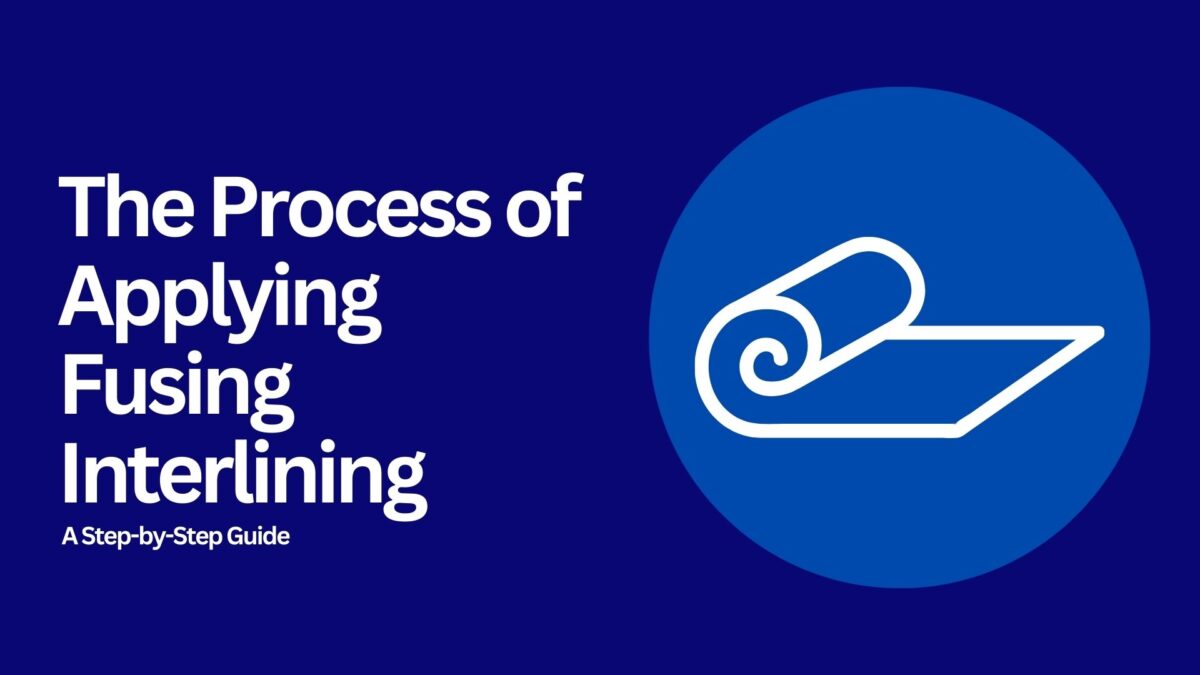
The Process of Applying Fusing Interlining: A Step-by-Step Guide Fusing interlining is a versatile fabric that can add structure, shape, and durability to your garments.
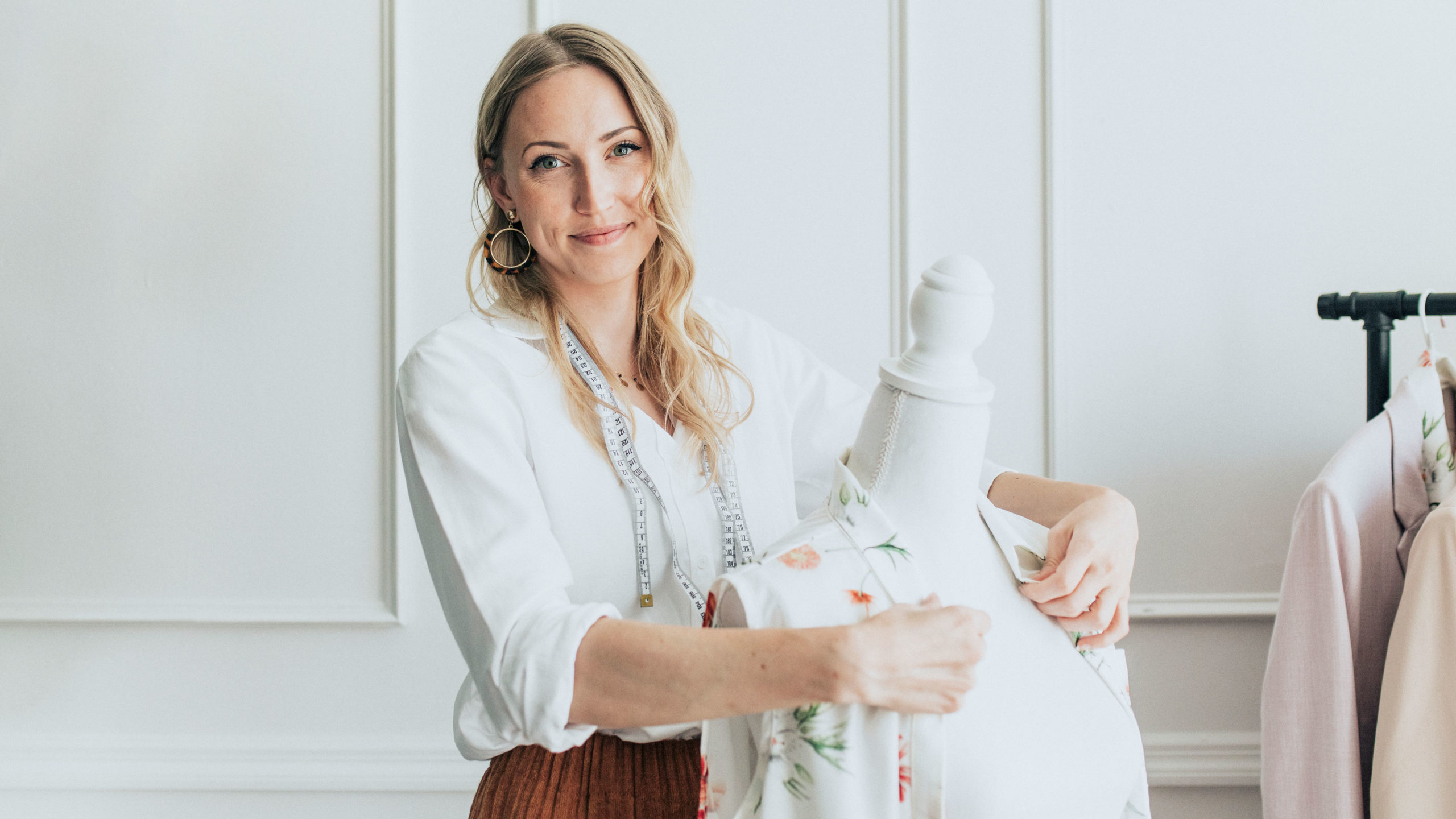
We serve everyone from emerging designers to large design groups and everyone in between.
We are here to help you navigate the many different kinds of Interlining, lining and accessory to find the correct one that applies to your garment.
+91 8928787250
Being a renowned supplier we offer an exclusive range of Woven Fusible Interlinings in white, black, and charcoal, pioneering as per industry standards.
Woven Interlining at Best Price in India
Find here online price details of companies selling Woven Interlining. Get info of suppliers, manufacturers, exporters, traders of Woven Interlining for buying in India.
What is woven interlining?
A fusible interlining is a thin layer made from woven, knitted or non-woven material bonded mechanically or thermally which when fused with fabric panel can give reinforcement, durability and can also stabilize and makes sewing work easier while sewing.
What are interlinings?
Interlining, sometimes referred to as underlining, is the technique of using an additional layer or layers of fabric behind your chosen fashion fabric to change its characteristics. ... It may be fused to the fabric but is more commonly hand placed and used in the couture world to improve the finish of a garment.
What is fusible interlining?
Fusible interlining is used in a lot of garments as well as other textiles like curtains. ... “a base fabric coated on one side with a thermoplastic adhesive resin which can be bonded to another fabric by the controlled application of heat and pressure.”
What is woven fusing?
Get Latest Price. The fusing adhesive interlining is produced through the process of scatter glue powder on the base cloth which is made by chemical method or hot rolling.
Related searches, types of fusible interlining, alternative of fusible interlining, non woven fusible interlining, woven fusible interlining hs code, fusible interlining fabric, fusible interlining manufacturers in india, knitted fusible interlining, woven interlining
Woven Interlining - Wholesaler & Wholesale Dealers in India
Find here Woven Interlining wholesaler & Wholesale Dealers in India. Get contact details & address of companies engaged in wholesale trade, manufacturing and supplying Woven Interlining across India.
Fusible Interlinings Manufacturer in Mumbai,Fusible Interlinings Supplier,Exporter From India
Double Ghoda is manufacturer,Supplier and Exporter of Fusible Interlinings from Mumbai, Maharashtra, India. Get best quality Fusible Interlinings at market leading price.
Fusible Interlining - fusible interlinings Suppliers, Fusible Interlining Manufacturers & Wholesalers
Find details of companies Supplying Fusible Interlining, Manufacturing & wholesaling fusible interlinings in India. Get Fusible Interlining at best price from Fusible Interlining Retailers, sellers, traders, exporters & wholesalers listed at Double Ghoda
Fusible Interlining Manufacturers,Fusible Interlining Suppliers Wholesaler Exporter in India
Get latest Fusible Interlining wholesale price - Find here details of Fusible Interlining manufacturers in India,Fusible Interlining Suppliers,Fusible Interlining Wholesalers,Get Fusible Interlining Mandi Price List from manufacturers supplier wholesaler traders dealers
Cotton Interlining Fabric Latest Price, Manufacturers & Suppliers
Our goal is to provide a full range of lining fabric in india, fusible interlining, and garment accessories to ease and improve the process of apparel making.
Cotton Interlining Fabric Manufacturers & Suppliers in India
What is interlining material?
Interlinings, also called interfacing, are generally nonwoven fabrics that add more structure and body to garment components like collars, button plackets, waistbands, and cuffs. Interlinings may be fusible or sew-on. Interlining durability is important for garment construction.
What is interlining fabric used for?
Interlining refers to material added between the outer fabric and the lining of a garment. You would typically use it to add extra warmth, but it can also ramp up the body or change the drape of a piece.
What is difference between interlining and lining?
Lining is constructed separately from the garment and attached at facing or hem areas by hand or machine. Interlining is a fabric added to a garment when more warmth is needed, like in a winter coat. It may be a heavy fabric with batting added, or a lighter weight one like flannel or fleece.
Interlining Fabric, Interlining Fabric Manufacturers, Suppliers & Dealers
Interlining fabric Suppliers in India
Import of Interlining Fabric to India
Related searches, interlining manufacturers in india, interlining fabric types, interlining fabric price, fusible interlining manufacturers in india, fusing interlining fabric, interlining manufacturers in mumbai, woven interlining, interlining fabric meaning
What fabric is used for lining?
Lining fabrics usually have a silky surface and are generally made from silk, polyester, viscose, acetate or rayon.
Is lining fabric necessary?
It'll make a garment made from itchy fabric (like wool) more tolerable on your skin. Lining will also hide unsightly seams (like on the inside of a jacket or on light-colored fabric), provide additional warmth and give a garment structure, shape and a better fit.
What is the purpose of lining fabric?
Linings provide a neat inside finish and conceal interfacing, padding, the raw edges of seams, and other construction details. A lining reduces the wearing strain on clothing, extending the useful life of the lined garment.
Lining Fabric at Best Price in India
Lining Fabric, Lining Fabric Manufacturers, Suppliers & Dealers
Cotton Lining Fabric - Exporters India
Buy Cotton Lining Fabric Online in India @ Best Price
Related searches, cotton lining fabric manufacturers in india, lining fabric online india, cotton lining fabric price, lining cloth price per meter, types of lining fabric, lining manufacturers in india, lining cloth online shopping, cotton lining fabric online
Lining Fabric in Mumbai,Lining Fabric in Thane
Top Lining Fabric Wholesalers in Mumbai
Lining Fabric In Mumbai, Lining Fabric Dealers
Polyester Lining Fabric In Mumbai, Maharashtra
Lining Fabric in Mumbai - Manufacturers and Suppliers India
Lining Fabric Manufacturers & Suppliers in Mumbai
Cities we cater in India: Panaji, Goa, Madurai, Tamil Nadu, Mysore, Karnataka, Amritsar, Punjab, Jaisalmer, Rajasthan, Hyderabad, Telangana, Pune, Maharashtra, Udaipur, Rajasthan, Chennai, Tamil Nadu, Kochi, Kerala, Varanasi, Uttar Pradesh, Kolkata, West Bengal, Bangalore, Karnataka, Agra, Uttar Pradesh, Mumbai, Maharashtra, Jaipur, Rajasthan, Delhi,
Related searches: fusible interlinings in india, woven interlinings in india, non woven fusible interlining in india, non fusible interlining in india, woven fusible interlining in india, suppliers of woven and non woven interlining in india, polyester lining fabric in india, polyester linings in india, lining polyester in india, poly cotton lining fabric in india, poly lining fabric in india, polyester lining fabric wholesale in india, garment accessories suppliers in india, interlining fabrics in india, paper fusing in india, lining fabric in india, coat buttons in india, sherwani button in india, lining cloth wholesale in india, buttons wholesale bulk suppliers in india Being a renowned supplier we offer an exclusive range of Woven Fusible Interlinings in white, black, and charcoal, pioneering as per industry standards.
Woven Interlining at Best Price in India
Find here online price details of companies selling Woven Interlining. Get info of suppliers, manufacturers, exporters, traders of Woven Interlining for buying in India.
What is woven interlining?
A fusible interlining is a thin layer made from woven, knitted or non-woven material bonded mechanically or thermally which when fused with fabric panel can give reinforcement, durability and can also stabilize and makes sewing work easier while sewing.
What are interlinings?
Interlining, sometimes referred to as underlining, is the technique of using an additional layer or layers of fabric behind your chosen fashion fabric to change its characteristics. ... It may be fused to the fabric but is more commonly hand placed and used in the couture world to improve the finish of a garment.
What is fusible interlining?
Fusible interlining is used in a lot of garments as well as other textiles like curtains. ... “a base fabric coated on one side with a thermoplastic adhesive resin which can be bonded to another fabric by the controlled application of heat and pressure.”
What is woven fusing?
Get Latest Price. The fusing adhesive interlining is produced through the process of scatter glue powder on the base cloth which is made by chemical method or hot rolling.
Related searches, types of fusible interlining, alternative of fusible interlining, non woven fusible interlining, woven fusible interlining hs code, fusible interlining fabric, fusible interlining manufacturers in india, knitted fusible interlining, woven interlining
Woven Interlining - Wholesaler & Wholesale Dealers in India
Find here Woven Interlining wholesaler & Wholesale Dealers in India. Get contact details & address of companies engaged in wholesale trade, manufacturing and supplying Woven Interlining across India.
Fusible Interlinings Manufacturer in Mumbai,Fusible Interlinings Supplier,Exporter From India
Double Ghoda is manufacturer,Supplier and Exporter of Fusible Interlinings from Mumbai, Maharashtra, India. Get best quality Fusible Interlinings at market leading price.
Fusible Interlining - fusible interlinings Suppliers, Fusible Interlining Manufacturers & Wholesalers
Find details of companies Supplying Fusible Interlining, Manufacturing & wholesaling fusible interlinings in India. Get Fusible Interlining at best price from Fusible Interlining Retailers, sellers, traders, exporters & wholesalers listed at Double Ghoda
Fusible Interlining Manufacturers,Fusible Interlining Suppliers Wholesaler Exporter in India
Get latest Fusible Interlining wholesale price - Find here details of Fusible Interlining manufacturers in India,Fusible Interlining Suppliers,Fusible Interlining Wholesalers,Get Fusible Interlining Mandi Price List from manufacturers supplier wholesaler traders dealers
Cities we cater in India: Panaji, Goa, Madurai, Tamil Nadu, Mysore, Karnataka, Amritsar, Punjab, Jaisalmer, Rajasthan, Hyderabad, Telangana, Pune, Maharashtra, Udaipur, Rajasthan, Chennai, Tamil Nadu, Kochi, Kerala, Varanasi, Uttar Pradesh, Kolkata, West Bengal, Bangalore, Karnataka, Agra, Uttar Pradesh, Mumbai, Maharashtra, Jaipur, Rajasthan, Delhi,
Related searches: fusible interlinings in india, woven interlinings in india, non woven fusible interlining in india, non fusible interlining in india, woven fusible interlining in india, suppliers of woven and non woven interlining in india, polyester lining fabric in india, polyester linings in india, lining polyester in india, poly cotton lining fabric in india, poly lining fabric in india, polyester lining fabric wholesale in india, garment accessories suppliers in india, interlining fabrics in india, paper fusing in india, lining fabric in india, coat buttons in india, sherwani button in india, lining cloth wholesale in india, buttons wholesale bulk suppliers in india© 2020 doubleghoda.com All Rights Reserved
Your go-to source for Garment Accessories Suppliers in India, we support the fashion world. Our products can be found in the most recognizable fashion brands today.
Fashion Garment Accessories Latest Price in India
Find here Garment Accessories, Fashion Garment Accessories wholesaler & Wholesale Dealers in India
Get Garment Accessories at best price from Garment Accessories Retailers, sellers, traders, exporters & wholesalers
Garment Accessories Company - Reliable and Audited Suppliers
Related searches, garment accessories suppliers in mumbai, garment accessories mumbai, garment accessories manufacturers in delhi, garment accessories online, garment accessories suppliers in sri lanka, list of garment accessories, garment accessories company, garment accessories suppliers in tirupur
Manufacturer & Suppliers of Fashion Accessories, Women Garments, Beach Wear and Promotional Sales Items. Supplier of: Clothing and footwear; Swimwear and more
What are the garment accessories?
Introduction to garment accessories. A garment accessory is an item that is used to contribute, in a secondary manner, to the wearer's outfit. Accessories are often used to complete an outfit and are chosen to specifically complement the wearer's look.
Related searches, garment accessories suppliers in mumbai, garment accessories mumbai, garment accessories manufacturers in india, garment accessories list, garment accessories manufacturers in delhi, garment accessories suppliers in delhi, garment accessories suppliers in sri lanka, garment accessories online
Cities we cater in India: Panaji, Goa, Madurai, Tamil Nadu, Mysore, Karnataka, Amritsar, Punjab, Jaisalmer, Rajasthan, Hyderabad, Telangana, Pune, Maharashtra, Udaipur, Rajasthan, Chennai, Tamil Nadu, Kochi, Kerala, Varanasi, Uttar Pradesh, Kolkata, West Bengal, Bangalore, Karnataka, Agra, Uttar Pradesh, Mumbai, Maharashtra, Jaipur, Rajasthan, Delhi,
Related searches: fusible interlinings in india, woven interlinings in india, non woven fusible interlining in india, non fusible interlining in india, woven fusible interlining in india, suppliers of woven and non woven interlining in india, polyester lining fabric in india, polyester linings in india, lining polyester in india, poly cotton lining fabric in india, poly lining fabric in india, polyester lining fabric wholesale in india, garment accessories suppliers in india, interlining fabrics in india, paper fusing in india, lining fabric in india, coat buttons in india, sherwani button in india, lining cloth wholesale in india, buttons wholesale bulk suppliers in india Being a renowned polyester lining fabric wholesale supplier in India we offer polyester linings fabric, cotton & china silk used as attached to the inner part of the garment to help keep its shape, etc.
Polyester Lining Fabric at Best Price in India
Is polyester good for lining?
A polyester is a good choice for a lining: it slides on easier than most cottons, doesn't stretch, and is reasonably priced. It also won't shrink with cleaning. It will also last as long as the wool, better than silk will.
What is polyester lining fabric?
Polyester fabrics generally do not stain easily and are resistant to stretching or shirking. Polyester linings are often used for lining and insulating raincoats and hats, but may be used for any other type of lining job. Note: This lining is equipped with a nice sheen and proves to be a bit translucent.
Polyester Lining Fabric - Wholesaler & Wholesale Dealers in India
cotton lining fabric price, polyester lining fabric for bags, polyester lining jacket, polyester lining hs code, cotton fabric wholesale price, types of clothes material, what is polyester
What is poly lining fabric?
Solid lightweight polyester fabric with a slick surface and a nice flowing drape. Suitable for linings. Machine washable.Compare to $7.00/yd. Solid lightweight polyester fabric with a slick surface and a nice flowing drape. Suitable for linings.
Is poly cotton good for lining?
Polyester sheath lining is a smooth, lightweight woven polyester that is good for lining pants, skirts etc. It is very soft and no wrinkles. ... Polycotton is another favourite with more weight – it is a blend of 50% Cotton, 50% Polyester fibers and is great as a curtain liner.
Cities we cater in India: Panaji, Goa, Madurai, Tamil Nadu, Mysore, Karnataka, Amritsar, Punjab, Jaisalmer, Rajasthan, Hyderabad, Telangana, Pune, Maharashtra, Udaipur, Rajasthan, Chennai, Tamil Nadu, Kochi, Kerala, Varanasi, Uttar Pradesh, Kolkata, West Bengal, Bangalore, Karnataka, Agra, Uttar Pradesh, Mumbai, Maharashtra, Jaipur, Rajasthan, Delhi,
Related searches: fusible interlinings in india, woven interlinings in india, non woven fusible interlining in india, non fusible interlining in india, woven fusible interlining in india, suppliers of woven and non woven interlining in india, polyester lining fabric in india, polyester linings in india, lining polyester in india, poly cotton lining fabric in india, poly lining fabric in india, polyester lining fabric wholesale in india, garment accessories suppliers in india, interlining fabrics in india, paper fusing in india, lining fabric in india, coat buttons in india, sherwani button in india, lining cloth wholesale in india, buttons wholesale bulk suppliers in india Top Garment Buttons Supplier in India - Double Ghoda. You can choose bulk wholesale Buttons in different shapes, colors, sizes, materials with high quality.
Garment Buttons - Wholesaler & Wholesale Dealers in India
Fancy Buttons Manufacturers & Wholesalers - Exporters India
Buy Buttons Online at Wholesale Prices
Buttons Manufacturer India,Wholesale Buttons Supplier in India
Sewing Buttons Wholesale, Cheap Buttons Supplies
About Button. The button is a small round disc usually attached to an article of apparel or garment in order to secure an opening, or for decorative ornamentation. Buttoning is done by sliding the button through a fabric with reinforced slit called buttonhole or thread loop.
How many types of button garments are there?
We know that, Ligne = 0.025 inch or 0.635mm. Here, given few common buttons size and there use in garments.
What are fabric buttons called?
Sometimes they are called 'jean's buttons'. Stud buttons are pressed onto the fabric with a special machine and are not used much for home applications. The button can be embossed or branded and is great for marketing purposes.
What are the types of buttons?
Different types of buttons
Plastic Buttons.
Metal Buttons.
Shank buttons.
Wooden Buttons.
Fabric Buttons. Cloth Covered Buttons made with kits.
Toggle button.
Press Buttons / Snap Buttons.
Decorative buttons.
Related searches, garment button manufacturers, types of buttons with names, polyester button manufacturers in india, button manufacturing companies in india, shank button, this is used in attaching buttons to the garments, shirt button manufacturers in india, button manufacturers in delhi
Garment Buttons at Best Price in India
Buy Buttons Online | Decorative Buttons for Clothing in India
Cities we cater in India: Panaji, Goa, Madurai, Tamil Nadu, Mysore, Karnataka, Amritsar, Punjab, Jaisalmer, Rajasthan, Hyderabad, Telangana, Pune, Maharashtra, Udaipur, Rajasthan, Chennai, Tamil Nadu, Kochi, Kerala, Varanasi, Uttar Pradesh, Kolkata, West Bengal, Bangalore, Karnataka, Agra, Uttar Pradesh, Mumbai, Maharashtra, Jaipur, Rajasthan, Delhi,
Related searches: fusible interlinings in india, woven interlinings in india, non woven fusible interlining in india, non fusible interlining in india, woven fusible interlining in india, suppliers of woven and non woven interlining in india, polyester lining fabric in india, polyester linings in india, lining polyester in india, poly cotton lining fabric in india, poly lining fabric in india, polyester lining fabric wholesale in india, garment accessories suppliers in india, interlining fabrics in india, paper fusing in india, lining fabric in india, coat buttons in india, sherwani button in india, lining cloth wholesale in india, buttons wholesale bulk suppliers in india